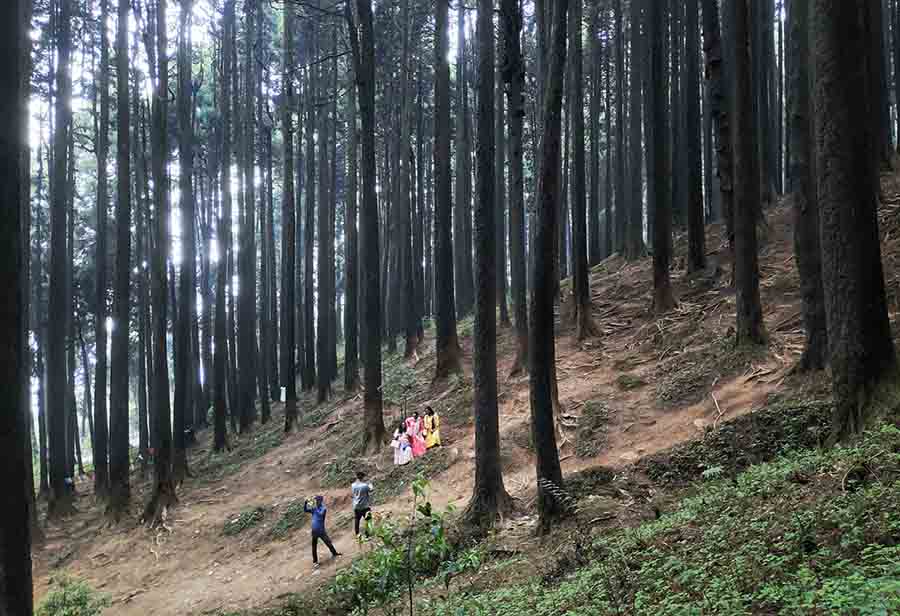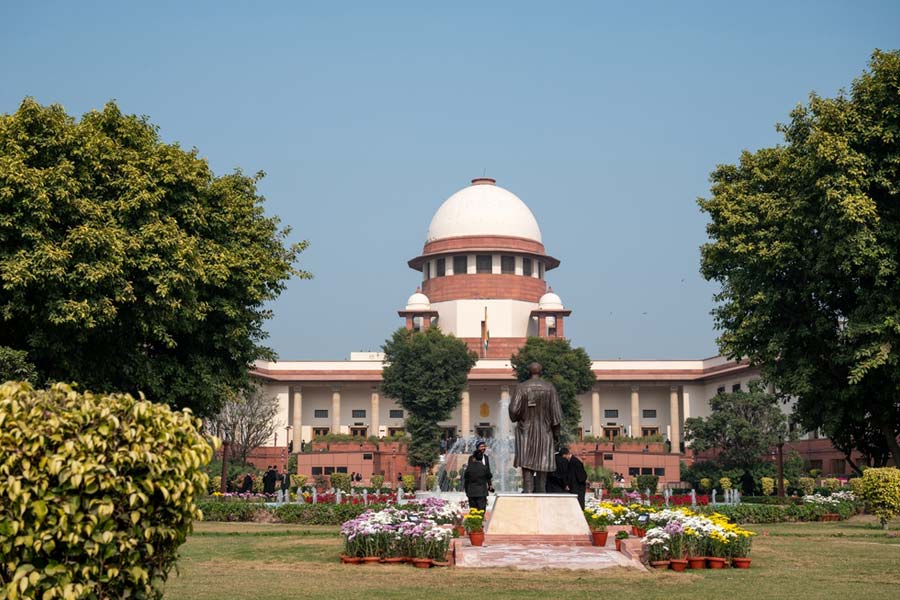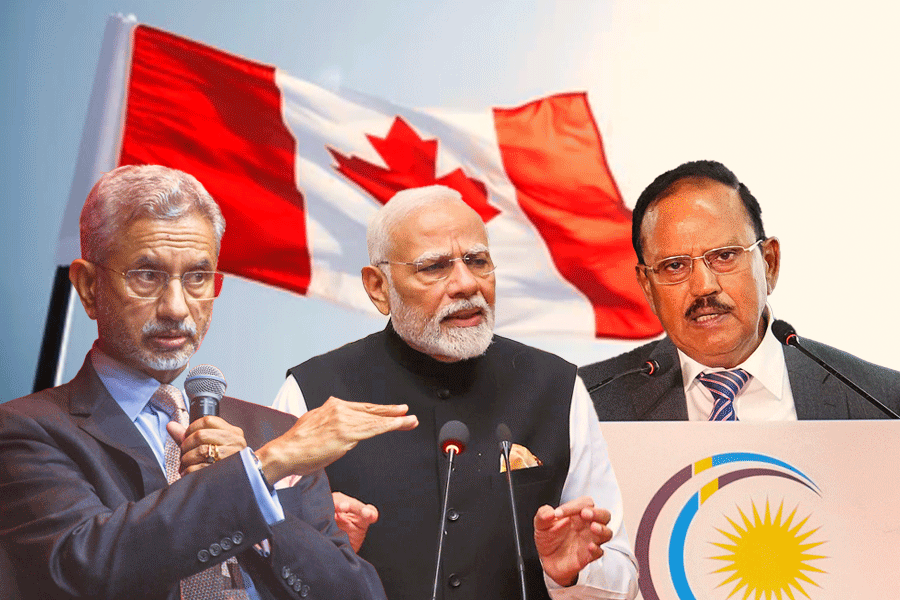As the speeches dragged on, eyes drifted to screens. Teenagers scrolled Instagram. One man texted his girlfriend. And men crowded around a phone streaming a soccer match while the group’s first female leader spoke.
Just about anywhere, a scene like this would be mundane. But this was happening in a remote indigenous village in one of the most isolated stretches of the planet.
The Marubo people have long lived in communal huts scattered hundreds of miles along the Ituí River deep in the Amazon rainforest. They speak their own language, take ayahuasca to connect with forest spirits and trap spider monkeys to make soup or keep them as pets.
They have preserved this way of life for hundreds of years through isolation — some villages can take a week to reach. But since September, the Marubo have had high-speed internet thanks to Elon Musk.
The 2,000-member tribe is one of hundreds across Brazil that are suddenly logging on with Starlink, the satellite internet service from Space X, Musk’s private space company. Since its entry into Brazil in 2022, Starlink has swept across the world’s largest rainforest, bringing the web to one of the last offline places on Earth.
The New York Times travelled deep into the Amazon to visit Marubo villages to understand what happens when a tiny, closed civilisation suddenly opens to the world.
The Marubo people frequently use their phones, bought in the closest city, when the Starlink antenna is turned on in their village.
“When it arrived, everyone was happy,” said Tsainama Marubo, 73, sitting on the dirt floor of her village’s maloca, a 50-foot-tall hut where the Marubo sleep, cook and eat together. The internet brought clear benefits, like video chats with faraway loved ones and calls for help in emergencies. “But now, things have gotten worse,” she said.
“Young people have gotten lazy because of the internet,” she said.
Then she paused and added: “But please don’t take our internet away.”
The Marubo are struggling with the internet’s fundamental dilemma: It has become essential — at a cost.
After only nine months with Starlink, the Marubo are already grappling with the same challenges that have racked American households for years: teenagers glued to phones; group chats full of gossip; addictive social networks; online strangers; violent video games; scams; misinformation; and minors watching pornography.
One Marubo leader, Enoque Marubo (all Marubo use the same surname), 40, said he immediately saw Starlink’s potential. After spending years outside the forest, he said he believed the internet could give his people new autonomy. With it, they could communicate better, inform themselves and tell their own stories.
Last year, he and a Brazilian activist recorded a 50-second video seeking help getting Starlink from potential benefactors. He wore his traditional Marubo headdress and sat in the maloca. A toddler wearing a necklace of animal teeth sat nearby.
They sent it off. Days later, they heard back from a woman in Oklahoma.
The tribe
The Javari Valley Indigenous Territory is one of the most isolated places on Earth, a dense stretch of rainforest the size of Portugal with no roads and a maze of waterways. Nineteen of the 26 tribes in the Javari Valley live in full isolation, the highest concentration in the world.
The Marubo were once uncontacted, too, roaming the forest for hundreds of years, until rubber tappers arrived near the end of the 19th century. That led to decades of violence and disease — and the arrival of new customs and technology. The Marubo began wearing clothes. Some learned Portuguese. They swapped bows for firearms to hunt wild boar, and machetes for chainsaws to clear plots for cassava.
One family in particular pushed this change. In the 1960s, Sebastião Marubo was one of the first Marubo to live outside the forest. When he returned, he brought another new technology: the boat motor. It cut trips from weeks to days.
Villagers using their phones, connected to the internet via Starlink.
His son Enoque emerged as a leader of the next generation, eager to pull his tribe into the future. Enoque has split his life between the forest and the city, working at one point as a graphic designer for Coca-Cola. So when Marubo leaders became interested in getting internet connections, they went to him to ask how.
Enoque got his answer when Musk came to Brazil. In 2022, the SpaceX owner and Jair Bolsonaro, Brazil’s President at the time, announced Starlink’s arrival in front of a screen that said: “Connecting the Amazon”.
Enoque and Flora Dutra, a Brazilian activist who works with indigenous tribes, sent letters to more than 100 members of Congress asking for Starlink. None responded.
Then early last year, Dutra saw an American woman speak at a space conference. Dutra checked the woman’s Facebook page and saw her posing outside SpaceX’s headquarters. “I knew she was the one,” she said.
The benefactor
Allyson Reneau’s LinkedIn page describes her as a space consultant, keynote speaker, author, pilot, equestrian, humanitarian, chief executive, board director and mother of 11 biological children. In person, she says she makes most of her money coaching gymnastics and renting houses near Norman, Okla.
Reneau said she did not try to help people for fame. “Otherwise, I’d be telling you about all the projects I do all over the world,” she said in an interview. “It’s the look on the face, it’s the hope in the eyes. That’s the trophy.”
She said she had that perspective when she received a video from a stranger last year asking to help connect a remote Amazon tribe.
She had never been to Brazil but thought the return on investment was high. Enoque was asking for 20 Starlink antennas, which would cost roughly $15,000, to transform life for his tribe.
Reneau said she bought the antennas with her own money and donations from her children. Then she booked a flight to go help deliver them.
The connection
The internet arrived on the backs of men. They trudged miles through the forest, barefoot or in flip-flops, carrying two antennas each.
Just behind were Enoque, Dutra, Reneau and a cameraman documenting her journey.
In the villages, they nailed the antennas to the tops of poles and plugged them into solar panels. The antennas then began connecting Starlink satellites to villagers’ phones.
The internet was an immediate sensation. “It changed the routine so much that it was detrimental,” Enoque admitted. “In the village, if you don’t hunt, fish and plant, you don’t eat.”
Leaders realised they needed limits. The internet would be switched on for only two hours in the morning, five hours in the evening, and all day on Sunday.
To Enoque, the biggest benefit has been in emergencies. A venomous snake bite can require swift rescue by helicopter. Before the internet, the Marubo used amateur radio, relaying a message between several villages to reach the authorities. The internet made such calls instantaneous. “It’s already saved lives,” he said.
The future
Dutra now has a goal to bring Starlink to hundreds more Indigenous groups across the Amazon, including Brazil’s largest remote tribe, the Yanomami.
New York Times News Service










